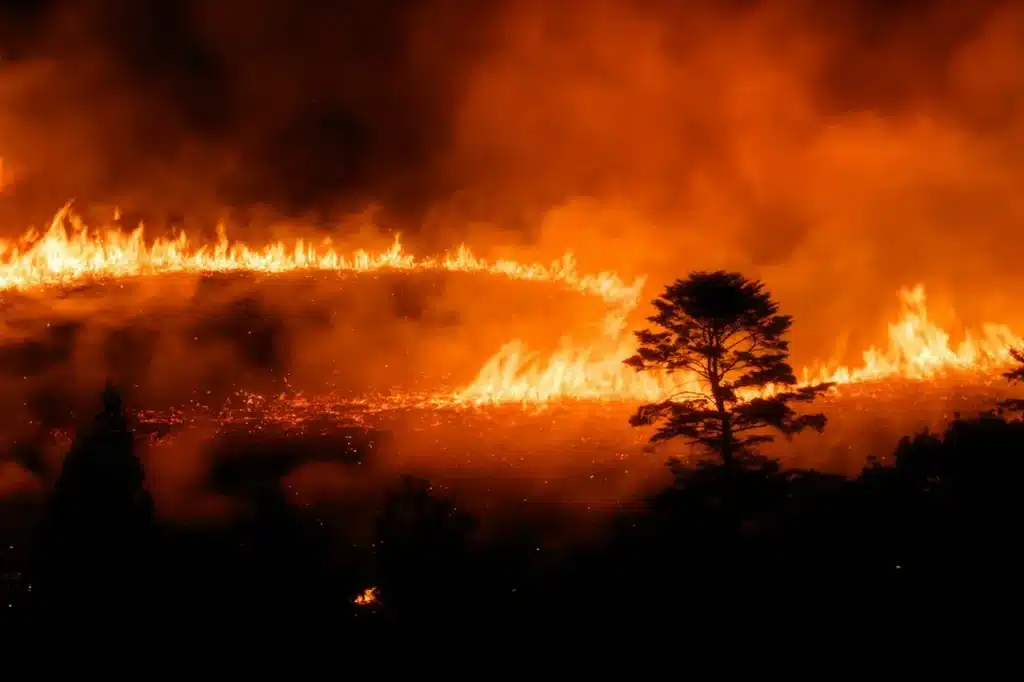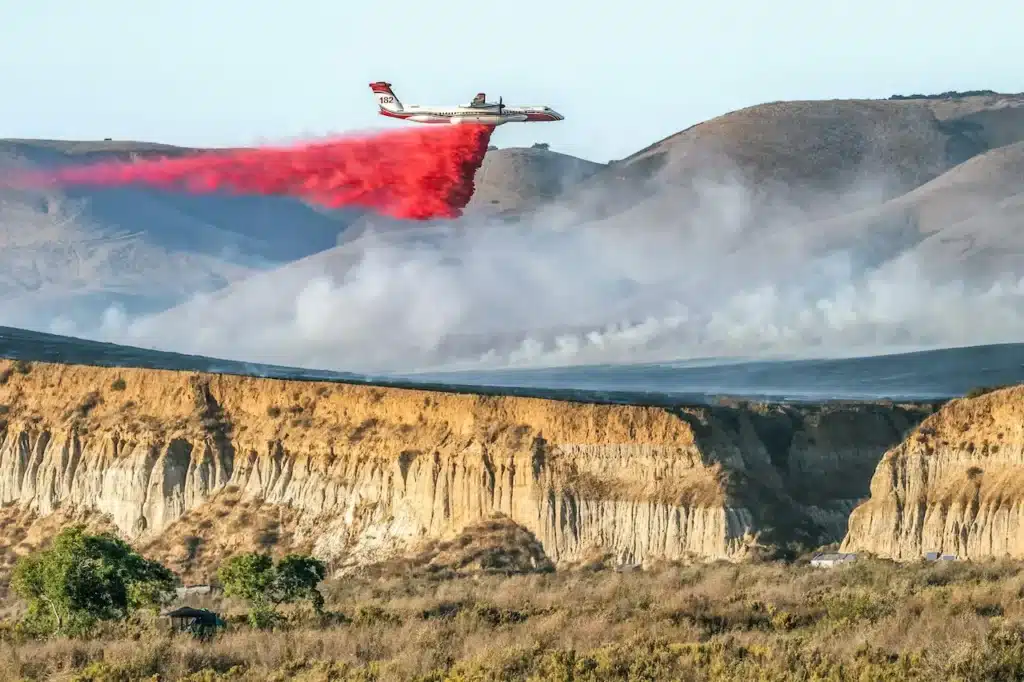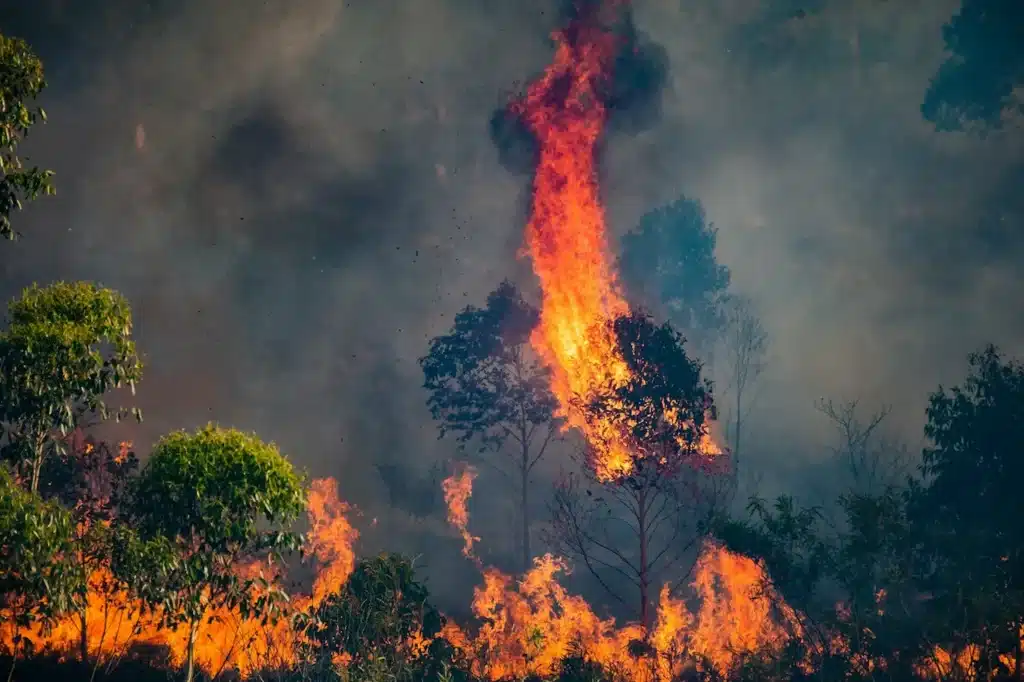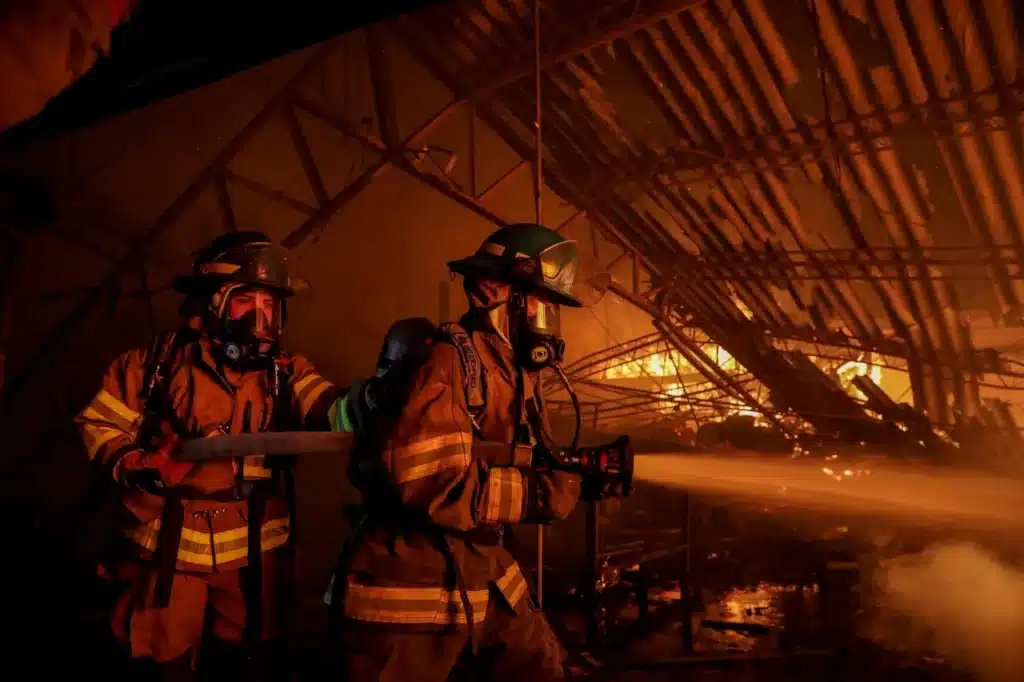Canberrans may have a better understanding of the problems that Los Angeles residents are facing today. In just 22 years, Canberra was ravaged by a wildfire which became one of Australia’s worst urban fires which also was called The Great Inferno in Australia.
On January 18, 2003, the bushfires in Canberra, as they’re known, erupted during a period of intense heat and strong winds. In just a few hours, the fires quickly spread from the bushland to the suburbs. The parched trees, dry grasses and other vegetation that give Canberra its nickname as the “bush-capital” were the fuel for the firestorm.
The fire burned for five days with flames as far as 18 miles. The fire claimed four lives, injured hundreds, and destroyed over 480 homes, leaving a permanent scar on the city of 500,000 people. Residents and firefighters fought to save as much as they could. Entire neighbourhoods were reduced into ash.

The 2003 bushfires are still a painful reminder for Australians. The 2003 bushfires are often mentioned in conjunction with the devastating Bushfire Season 2019-2020, also known as “Black Summer”, which killed 34 people and destroyed more than 3,000 houses, burning millions of acres. These disasters are a grim reminder of the increasing threat of extreme fires in Australia.
Rohan, who was a firefighter at the time of the 2003 inferno, said, “There were many embers and the wind was relentless.” His words echo chaos and fear, which gripped Canberra while the city burned.
Australia’s Land of Fire
Australia has long been called a “land of fire” for a reason. While its wildfires may not always seem as catastrophic as those recently seen in California or the Amazon, they are deeply woven into the continent’s ecology. Australia’s plants and animals have evolved over millions of years to coexist with fire. As the second-driest continent on Earth after Antarctica it has endured low rainfall, scorching temperatures, and high evaporation rates since deserts dominated its landscape at the end of the last Ice Age.
In such an unforgiving environment, fire has become both a destroyer and a giver of life. Fires regenerate the soil by clearing away dead vegetation, destroying invasive weeds, and leaving behind nutrient-rich ash. Many native plant species even depend on fire for survival. For instance, some eucalyptus trees shed flammable bark and leaves that accumulate around their bases, essentially providing kindling for future fires. Their seeds are only released by the intense heat of flames, ensuring the next generation of growth. Similarly, banksias and acacias need fire to open their seed pods and germinate, while certain grasses thrive in post-fire landscapes.
But in recent years, Australia’s ancient balance with fire has been pushed to its limits. This past summer, even fire-adapted ecosystems have suffered devastation. The country’s climate has grown increasingly extreme, with longer droughts and hotter heatwaves amplifying the risk and severity of bushfires. In September, a crippling drought harsh even by Australian standards turned vast swathes of land into a tinderbox. By December, a record-breaking heatwave brought temperatures soaring past 120°F, and New South Wales was forced to declare a state of emergency as infernos engulfed the eastern seaboard.

These conditions fed massive firestorms that burned hotter and longer than ever before. Forests that had evolved to endure occasional burns were now subjected to repeated blazes, leaving little time to recover. Animals struggled to flee, and habitats were annihilated. The once-resilient eucalyptus forests, grasslands, and heathlands faced a new reality: fires coming so frequently and fiercely that even they could not regenerate.
Australia’s relationship with fire once a delicate dance of destruction and renewal is now at risk of spiraling into unrelenting catastrophe.
How 2003 Canberra Fires Changed Australian Fire Management?
The 2003 Canberra bushfires were a pivotal event in Australia’s response to and preparation for fire threats. Four lives were lost, hundreds of people injured and over 480 homes destroyed. This scale of destruction led to sweeping changes in Australia’s fire prevention strategies, building standards and urban planning.
Bushfire Management Standards, and Asset Protection Zones (APZs), have been implemented. These zones act as a buffer zone between homes and the surrounding vegetation, reducing fire intensity and ember attacks. To prevent fires, for example, the grass in buffer zones must be mowed and maintained regularly to a certain standard.
In the wake of 2003, technology has improved. The modern bushfire modelling software helps authorities predict the spread of fires in bushfire-prone regions, allowing emergency services to better prepare. The ability to predict fire behavior has become more important as climate change causes increasingly intense and erratic fire behavior.
New codes of construction and new material standards are now mandatory for those who build or renovate in areas with high fire risks. Materials that are resistant to high temperatures and ember attacks, like non-combustible materials, metal screens and toughened glasses, must be used in the construction of homes. Even the smallest features, such as decks and fencing, are scrutinized. Many residents choose renewable plastic composites instead of traditional wood which is more flammable.
One resident said, “I myself live in an area prone to bushfires.” “When I built a deck I used a plastic material that is not flammable instead of wood because it was more fire resistant. It’s a fact of life that you have to consider fire when making any decision.
The firefighting industry has evolved as well, with an increase in investment into aerial firefighters and programs for community education. systems of early warning. Fire services are now promoting “stay, defend or leave early” strategy to encourage residents to plan ahead. This will help them avoid evacuations at the last minute that can cost lives.
Lessons from 2003 changed Australia’s mentality: fires are no longer seen as an occasional danger but as a constant part of life on the driest continent in the world.

Australia’s Bushfire Crisis
Australia is experiencing one of its most devastating bushfire seasons. The destruction levels are higher than some of the worst fire disasters in the world. Take a look at how the crisis is unfolding:
Humanitarian crisis unfolding
State of emergency has been declared in New South Wales, and a disaster state in Victoria. The east coast of Australia is engulfed in fire. Transport routes are cut off, and communication lines are down. Authorities are attempting to save as many lives as possible, but the fate of some communities remains uncertain. Humanitarian agencies are warning of an impending catastrophe, as supplies are running out and thousands have been displaced.
Massive Scale of Destruction
The fires so far have scorched an area of approximately 14.5 millions acres of land, which is nearly as large as West Virginia or the entire country Belgium. This is about 50 times larger than the area that was burned in California’s wildfires of 2018.
Toxic air quality
On New Year’s Day Canberra, the capital city of Australia, recorded the worst air pollution in the world. The eastern seaboard has been blanketed by a massive plume that stretches as far as Europe. This smoke is turning the skies orange, and making it dangerous for residents to breathe.
Unprecedented Loss of Wildlife
According to scientists, nearly half a million native animals, including kangaroos and koalas as well as a variety of bird and reptiles species, have perished. The entire ecosystem is under threat and scientists are worried that rare and endangered species could have been completely wiped out before they can assess the damage.
Animals that survive the inferno are facing starvation
The situation is dire for animals who have survived. As food and water sources disappear in the scorched landscapes, mass “starvation” events are taking place. Animals are leaving their young in despair, unable to feed them on the scorched wastelands.
The area that has been burned up to date is more than 13,000,000 hectares, which is almost the size of England.
While the world has witnessed devastating fires in recent year the Amazon fires in 2019 burned about 900,000 hectares, and California’s 2018 wildfires scorched around 800,000 hectares Australia’s bushfires stand apart for their sheer scale and ferocity. This is more than a national disaster; it’s a wake-up call for the entire world.
Others have called it Mother Nature’s cry, a stark reminder that environmental crises are escalating on the planet. The question is now, how much longer can Australia and the rest of the world endure the rising temperatures and intensifying droughts?

Human and wildlife Losses in Australia’s Bushfires
At least 23 Australians have died in the current bushfire disaster. More than 2,000 houses have been reduced to rubble, and tens thousands of Australians have been displaced. The east coast is a mess, with entire communities destroyed and towns leveled.
However, the human cost is just one part of this tragedy. World Wide Fund for Nature estimates that nearly half a million animals have died in New South Wales. This figure includes many native species, including koalas and kangaroos. It also includes wallabies, honeyeaters, kookaburras and cockatoos. As the flames quickly engulfed these habitats, thousands of animals perished. Many more are now struggling to survive on charred and foodless landscapes.
Koalas have been particularly hard hit. Their populations, which were already listed as vulnerable prior to the fires, have been decimated, and experts are now concerned about localized extinctions. The injured survivors are suffering from severe burns, starvation and dehydration. This is overwhelming the wildlife rescue and rehabilitation effort.
Ecologists warn it may take decades, or even longer, to recover from the ecological impact these fires have had. The destruction of habitats such as eucalyptus forest and heathlands threatens individual species, but also entire ecosystems which are well-balanced and adapted to Australia’s unique climate.
There are increasing concerns over the long-term effects of the devastation. The loss of vegetation can lead to soil contamination and water pollution, and the death of many pollinators or seed dispersers may slow down natural regeneration. This unimaginable disaster shows the vulnerability of Australia’s biodiversity to climate change-driven fire seasons.
Conclusion
Although the destruction caused by Australia’s bushfires has been staggering, there are still signs of hope. Communities across the country are working together to help rebuild homes, assist displaced families and save injured wildlife. Scientists and conservationists are working hard to restore habitats damaged by the fires. They are also implementing new climate awareness and fire management strategies. Signs of life have already emerged from the ash-covered earth. Green shoots are piercing the ash and a testament to nature’s incredible resilience. Australia will be stronger after this crisis if it uses collective effort, innovates, and renews its commitment to the environment.




